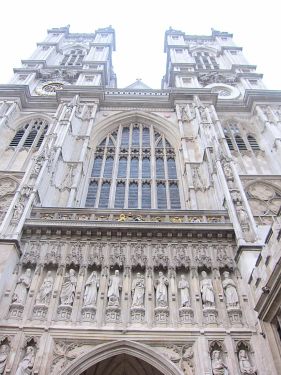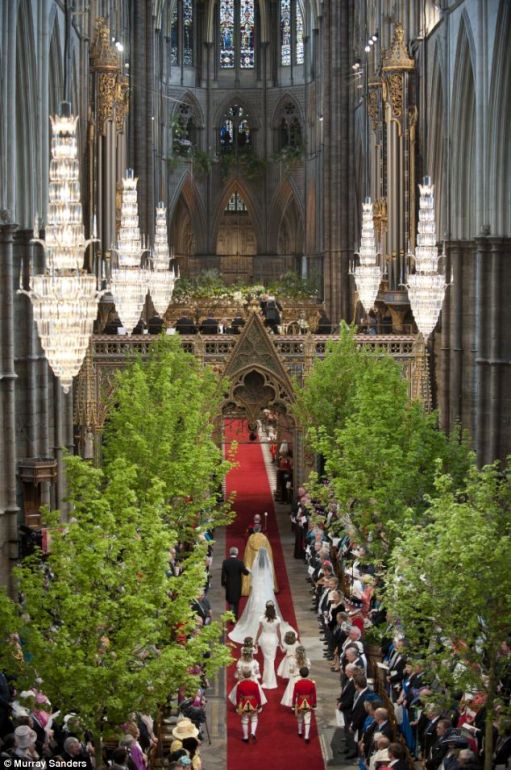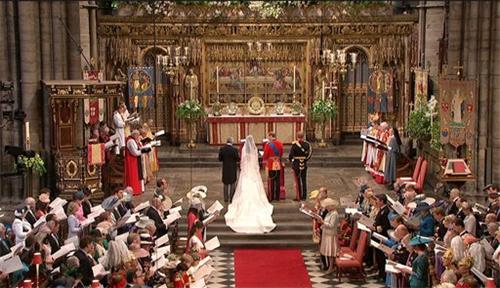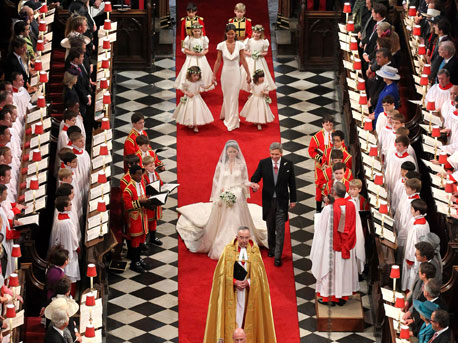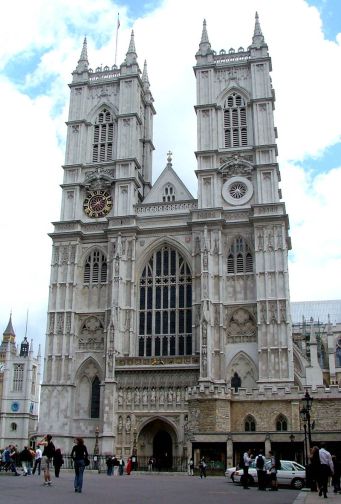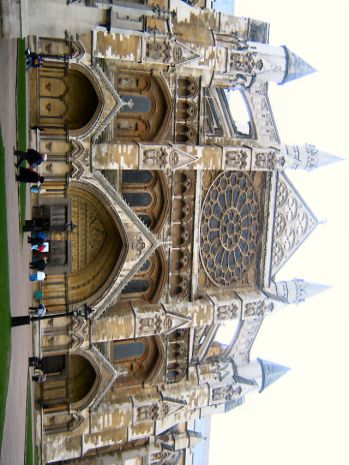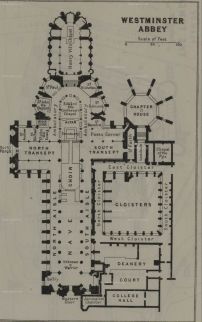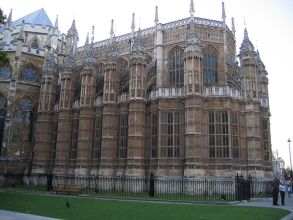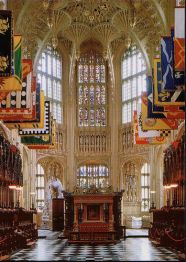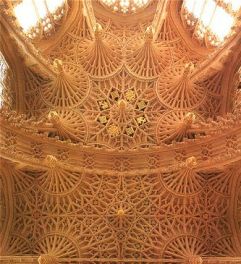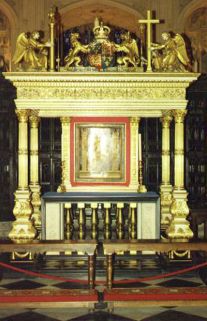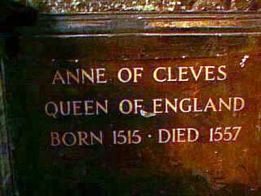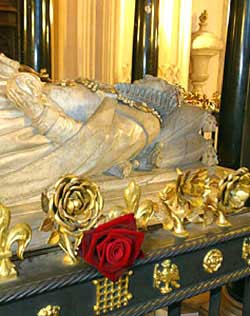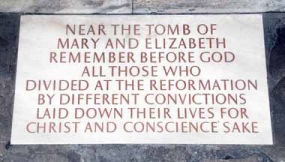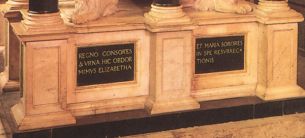Westminster Abbey
Jump to navigation
Jump to search
| Want to add to this page? Click EasyEdit to update this page! (Don't see the EasyEdit button above? <a href="/#signin" target="_self">Sign in</a> or <a href="/accountnew" target="_self">Sign up</a> |
| <a class="external" href="http://www.telegraph.co.uk/news/uknews/royal-wedding/8181137/Westminster-Abbey-to-get-million-pound-makeover-in-time-for-the-royal-wedding.html" rel="nofollow" target="_blank" title="The Telegraph">The Telegraph</a> By <a class="external" href="http://www.telegraph.co.uk/journalists/roya-nikkhah/" rel="nofollow" target="_blank" title="Roya Nikkhah">Roya Nikkhah</a>, Arts Correspondent 05 Dec 2010 Westminster Abbey to get million pound makeover in time for the royal wedding Westminster Abbey, the wedding venue for Prince William and Kate Middleton, is to undergo a major conservation programme to restore its most precious works of art.<a class="external" href="http://www.telegraph.co.uk/news/uknews/royal-wedding/8154425/Westminster-Abbey-a-royal-wedding-venue-steeped-in-history.html" rel="nofollow" target="_blank">The Abbey</a>, which is expected to host up to 3,000 guests at the <a class="external" href="http://www.telegraph.co.uk/news/uknews/royal-wedding" rel="nofollow" target="_blank">royal wedding</a> in April, including Royals and heads of state from around the world, is to receive a grant from an American bank to conserve more than 10 of its most important treasures. 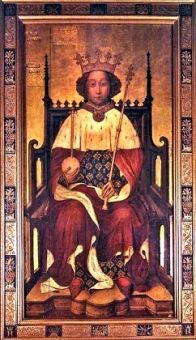 Among the artefacts to be restored in the run-up to the wedding include the Cosmati Pavement, the medieval tile mosaic in front of the High Altar where Prince William and Miss Middleton are expected to take their vows. Among the artefacts to be restored in the run-up to the wedding include the Cosmati Pavement, the medieval tile mosaic in front of the High Altar where Prince William and Miss Middleton are expected to take their vows. A 14th century portrait of King Richard II, which hangs on a pillar by the Great West Door and will be one of the first things that members of the wedding procession see as they enter the Abbey, will also be restored. Painted on wooden panels circa 1398, it depicts the king enthroned in coronation robes, holding a sceptre and orb, and is the earliest known contemporary painted portrait of an English sovereign. Thought to have been painted by the French artist André Beauneveu, the picture has long been in need of conservation, which will include rejoining the joints between the wooden panels that have gradually separated, and cleaning the picture's surface. Other key pieces from the Abbey's collection that will be restored in the coming months include a painting of Queen Elizabeth I dating from 1594; Queen Mary II's wooden coronation chair made in 1689; and the Liber Regalis, a 14th century manuscript describing how a coronation is carried out, which was made for the crowning of Ann of Bohemia, the consort queen of Richard II, and has provided the basis for the order of service for all subsequent coronations. A 16th-century stained glass panel featuring the head of Catherine of Aragon, a wooden architectural model of the Abbey by Sir Christopher Wren circa 1720, and a manuscript dated 1399 which records Geoffrey Chaucer’s lease of a house owned the Abbey’s monks, will also be restored. The grant, which is thought to be in the region of £1 million, is one of the largest ever donations received by the Abbey. It is the first grant of its kind by Bank of America Merrill Lynch, which has established an inaugural art conservation programme to provide funding for the restoration of important works of art around the world. Other recipients of this year's award include the Louvre Museum in Paris and the State Hermitage Museum in St Petersburg. A spokesman for Bank of America Merrill Lynch said that the bank would not seek "sponsorship" signs within the Abbey, but that "where appropriate, there may be some discreet allusions to the conservation programme related to certain works of art that have benefited, but this will be entirely at the discretion of the Abbey". Dr Tony Trowles, the head of collections at Westminster Abbey, said: "This is certainly one of the largest donations we have received, and we are thrilled to have been considered alongside major art institutions such as the Louvre and the Hermitage. "We are delighted that we will be able to conserve and restore so many of our most treasured pieces in the Abbey's collection. "While we have an ongoing commitment to maintain the collection, the Abbey will certainly be under the spotlight in the coming months and we want to make sure that it looks as good as we can make it come April." The Abbey is expected to attract thousands of extra visitors in the run-up to the Royal wedding next year. Royal aides have said that the Prince and Miss Middleton chose the venue for their wedding “because of its staggering beauty, its 1,000 years of Royal history and its relative intimacy despite its size”. Rena De Sisto, Bank of America Merrill Lynch's global arts and culture executive, said: "We are delighted for the Abbey at the news that they are to host next year's Royal wedding. "This will undoubtedly help turn people's attention to the variety of riches that lie within this wonderful national treasure. "Westminster Abbey is full of objects that represent significant cultural and historical value – it is extremely important to preserve these artefacts and we are proud to help do this." |
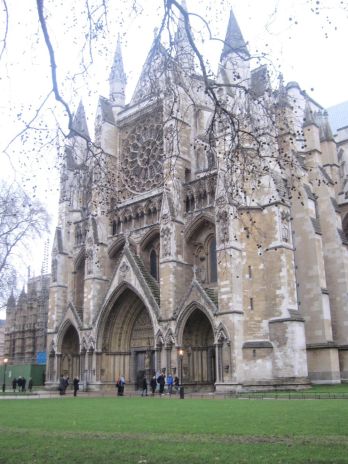 | 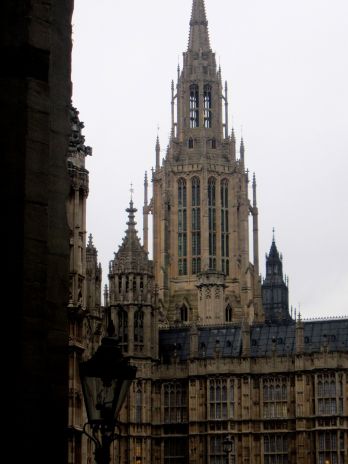 |
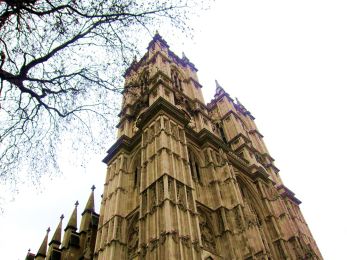 | 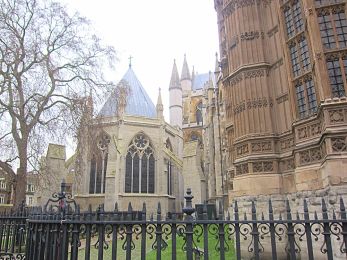 |
<embed allowfullscreen="true" height="350" src="http://widget.wetpaintserv.us/wiki/thetudorswiki/widget/youtubevideo/357b3f6ce2bc8f16f0521e35ca175f1ea27dfd63" type="application/x-shockwave-flash" width="425" wmode="transparent"/> |
(large pics on left and small pics & text on the right.)
| Site of the coronation of English kings since the Normans, Henry VII added his own addition to the Abbey named the Henry VII Chapel or the Lady's Chapel. It was here that all Tudor monarchs, except Henry VIII, are buried. Mary Stuart, Queen of Scots and Margaret Douglas both Tudor cousins, Margaret Beaufort, mother of Henry VII, and Anne of Cleves are also buried in the Abbey. Besides royalty, other notable Tudor personalities that are buried in the Abbey include: William Shakespeare, Frances Brandon, Henry Carey and Katherine Carey Knollys (children of Mary Boleyn), Lord Henry Norris (son of the Henry Norris executed in 1536), and Edmund Spenser. | |
| North Entrance | |
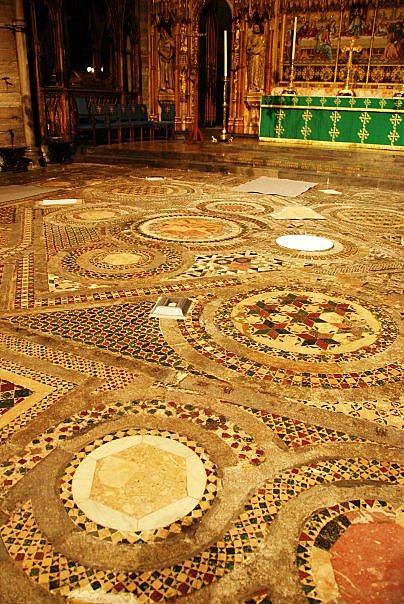 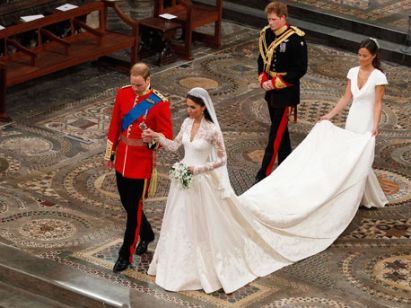 | The Cozmati Pavement which had been covered by carpet . Many Kings and Queens have walked over this on their way to be crowned. |
| Exterior of Henry VII's chapel. | |
| Henry VII's Chapel & Vaulted Ceiling of Henry VII's Chapel | |
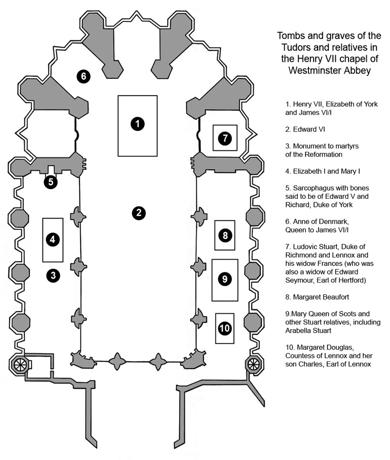 | Map of tombs located in <a class="external" href="http://tudorhistory.org/places/westabbey/henry7chapel.jpg" rel="nofollow" target="_blank">Henry</a> VII's Chapel |
| Tomb of Edward VI | |
| Grave stone of Anne of Cleves | |
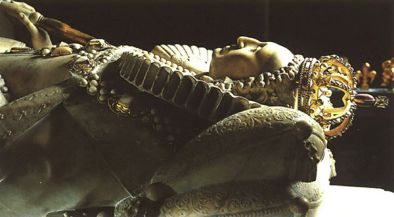 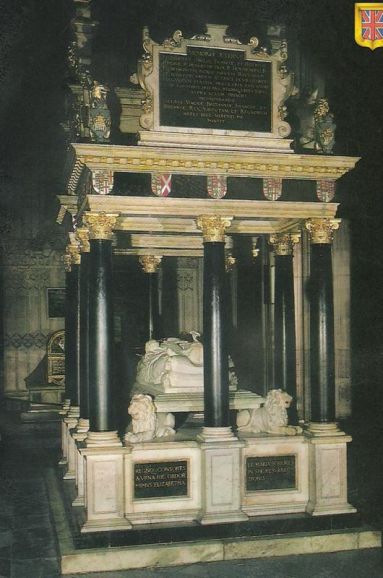 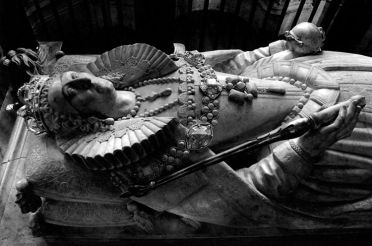 | Queen Elizabeth I Queen Mary I Tombs Elizabeth was first buried in the vault of her grandfather, King Henry VII, in the Abbey. Her successor, King James I, erected the large white marble monument to her memory in the north aisle of the Lady Chapel at a cost of £1485. This was made by sculptor Maximilian Colt and painted by Jan de Critz and her body was moved to it in 1606. Elizabeth I was the last monarch buried in the Abbey to have a monument erected above her. The recumbent effigy resembles portraits of the Queen in old age. The crown and collar which she wears are modern replacements, as are the orb and sceptre she carries, the originals having been stolen centuries ago. The original wax effigy carried on her funeral hearse was remade in 1760 and it can be seen in the Abbey Museum. Also displayed there is the so-called "Essex Ring" that the Queen is said to have given to one of her favourites, the Earl of Essex. Her half-sister, Queen Mary Tudor, (1516-1558), daughter of Henry VIII by Catherine of Aragon, is also buried beneath this monument. The inscriptions are in Latin and can be translated: "Sacred to memory: Religion to its primitive purity restored, peace settled, money restored to its just value, domestic rebellion quelled, France relieved when involved with intestine divisions; the Netherlands supported; the Spanish Armada vanquished; Ireland almost lost by rebels, eased by routing the Spaniard; the revenues of both universities much enlarged by a Law of Provisions; and lastly, all England enriched. Elizabeth, a most prudent governor 45 years, a victorious and triumphant Queen, most strictly religious, most happy, by a calm and resigned death at her 70th year left her mortal remains, till by Christ's Word they shall rise to immortality, to be deposited in the Church [the Abbey], by her established and lastly founded. She died the 24th of March, Anno 1602 [this is Old Style dating, now called 1603], of her reign the 45th year, of her age the 70th. To the eternal memory of Elizabeth queen of England, France and Ireland, daughter of King Henry VIII, grand-daughter of King Henry VII, great-grand-daughter to King Edward IV. Mother of her country, a nursing-mother to religion and all liberal sciences, skilled in many languages, adorned with excellent endowments both of body and mind, and excellent for princely virtues beyond her sex. James, king of Great Britain, France and Ireland, hath devoutly and justly erected this monument to her whose virtues and kingdoms he inherits." Queen Mary I Tomb: On 17 November 1558, Mary was buried in the north aisle of Henry VII's Lady Chapel. The wooden effigy carried at her funeral still exists but only the head is displayed in the Abbey Museum. Elizabeth I's coffin was later placed on top of Mary's. James I erected a large monument above the grave but this only bears the effigy of Elizabeth on it. Mary is mentioned in the inscription above. |
LINKS:
| LITERATURE:
|

